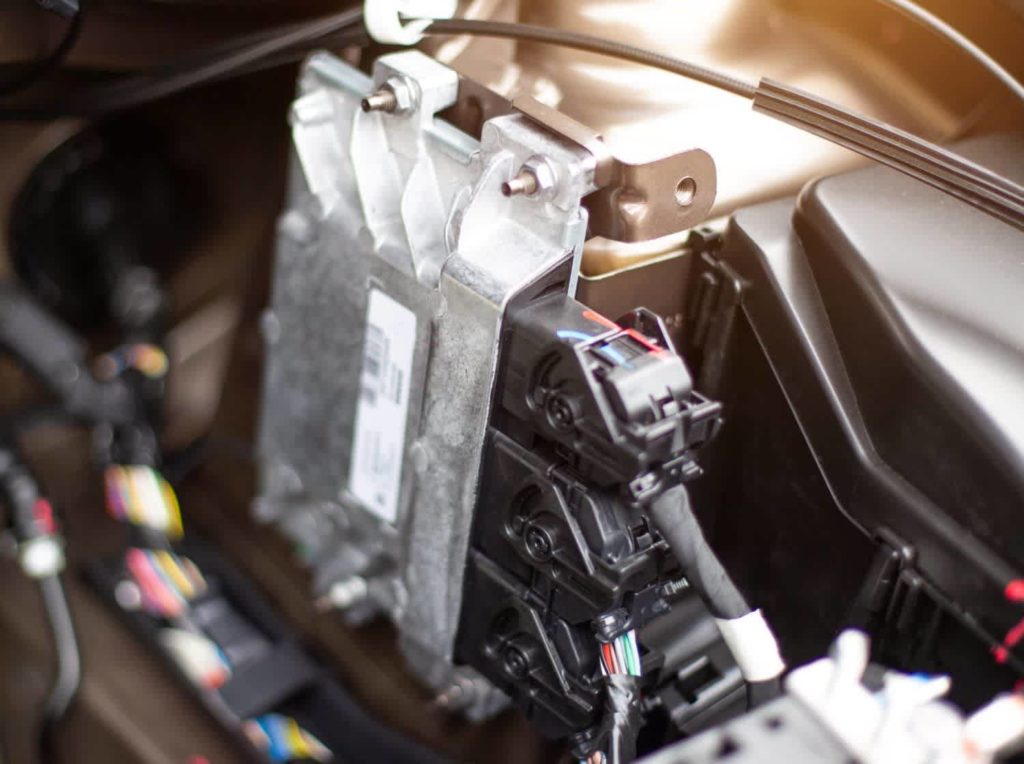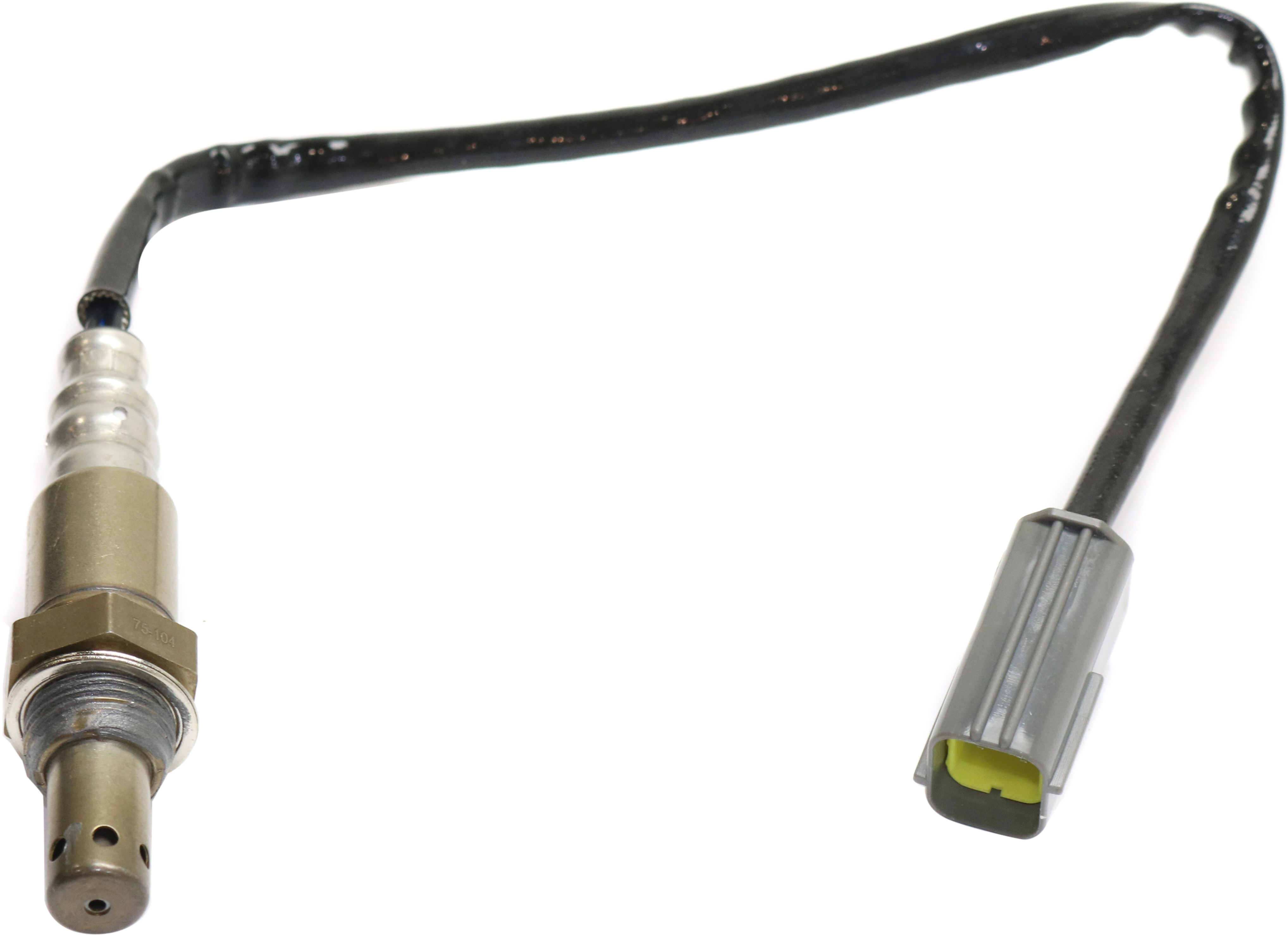To stay in top condition, an engine must maintain the ideal air/fuel ratio. Oxygen sensors help ensure this by keeping the powertrain control module (PCM) updated on oxygen levels in the exhaust stream. This allows the PCM to adjust the air/fuel ratio whenever necessary.
The ratio is considered rich if there is too much fuel, while it is considered lean if there is too much oxygen. If your check engine light is illuminated and a P2907 code registers when you connect a scan tool to your car’s OBD port, you are dealing with the former issue. Learn what it means, what could have caused it, common symptoms, and more.
What Does the P2097 Code Mean?
Diagnostic trouble code (DTC) P2097 stands for Post Catalyst Fuel Trim System Too Rich Bank 1. It is triggered when the downstream bank 1 oxygen sensor registers a rich condition.

To learn about the difference between the upstream and downstream oxygen sensors, read our explanation here.
For an advanced understanding of fuel trim, you can read our detailed, technical explanation here.
If you wish to know the most common causes of code P2097, read the next section.
What are the Possible Causes of the P2097 Code?
Rich Running Condition
A rich running engine may trigger the P2097 code. If you are planning to replace the oxygen sensor, make sure to check for issues that could contribute to a rich running condition first.
Faulty Oxygen Sensor
If no exhaust leaks are found, a faulty upstream oxygen sensor is the most likely culprit for this trouble code. To rule this out, check the upstream oxygen sensor and circuit before diagnosing the downstream oxygen sensor.

Damaged Wiring or Poor Connections in the Oxygen Sensor Circuit
Check the oxygen sensor’s connectors for moisture, chaffing, breaks, burns, and damaged pins. This code may also be set if the O2 sensor wiring is disconnected, open, or short to ground.
Malfunctioning PCM
In some cases, the error code P0297 may be erroneously set because of a PCM in need of a software update.
Concurrent Trouble Codes
The P2097 code could be triggered due to other concurrent trouble codes that may be causing the vehicle to run in a rich condition.
What are the Common Symptoms of the P2097 Code?
- Check Engine Light is illuminated
- Poor engine performance
- Reduced fuel economy
- Poor, erratic, or rough idling
- Engine may stumble or hesitate upon acceleration
- Engine is hard starting while hot
- In some cases, you may notice a fuel odor
- In extreme cases, the vehicle’s tailpipe may emit black smoke
- Related DTCs may be registered
How to Diagnose the P2097 Code
Identifying the underlying cause of the P2097 code can be challenging if you don’t have extensive automotive knowledge. In most cases, it’s best to seek the expert advice of a mechanic for proper diagnosis and repair. However, if you are confident with your repair know-how, you can try to determine what triggered the issue.
How to Fix the P2097 Code
Like other OBD-II codes, the repair process for the error code P2097 may differ based on the vehicle. Hence, once you’ve diagnosed the issue, make sure to research a solution that’s specific not only to what triggered the code but also to your car’s year, make, and model. Reading online auto repair resources and guides can help you find the correct fix. You can also get an ALLDATA single-vehicle subscription, which could help you pull off this repair job and other future repairs you may have to don on your vehicle.

A Closer Look at Fuel Trim
Fuel trim isn’t something that can be read with an oscilloscope or meter – it must be reported to a scan tool by way of the datastream. Short fuel trim is the immediate response of the ECM/PCM to rich and lean conditions reported by the O2 sensor (primarily the upstream sensor). Short fuel trim should remain near zero if everything is working right, but it dances just above and below the perfect mix to maintain the balance.
If the O2 reads an oxygen level in the exhaust that is too low (rich mixture), the fuel trim readings will correct to the MINUS side of the zero, and if they move too far in that direction, long fuel trim (short fuel trim’s ‘big brother’) begins making coarse adaptive adjustments to the total fuel trim to allow short fuel trim to return to near zero. If the O2 indicates too much oxygen in the exhaust, the opposite is true – the fuel trim readings will correct to the PLUS (positive) side – above zero.
It’s a delicate balancing act to keep the mixture as near as possible to the 14.7 mix of air and fuel (by weight). Thus if you’re looking at data stream numbers and you see long fuel trim numbers in double digits on either side of zero but short fuel trim is near zero, you know there is a fuel mixture issue due to a vacuum leak or perhaps a saturated EVAP canister dumping excess HC into the intake during purge. There are other issues that can cause rich or lean conditions.
During the course of watching the upstream O2 sensor, the ECM/PCM also watches the downstream sensor for indications that the mixture is too rich – and if the upstream O2 sensor on that bank becomes unreliable, the ECM/PCM will actually begin to adjust fuel trims based on rear O2 sensor input.
Where to Get New Oxygen Sensors for Your Vehicle
Driving with a P2097 code due to faulty oxygen sensors could lead to various head-scratching issues, such as stalls, poor fuel economy, and even engine damage. All these require pricey repairs, so why not save money and get replacement sensors right away?
For high-quality oxygen sensors at unbeatable prices, look no further than CarParts.com. We source our products from the most trusted manufacturers in the industry, so the parts you order are sure to last. You can also count on our fast and reliable shipping, as we have strategically located distribution centers across the country.
We value your customer experience more than anything, so don’t hesitate to contact our round-the-clock customer service if you need help with anything. On top of that, we also accept returns within 60 days of purchase with a money-back guarantee!
So don’t wait until your vehicle’s oxygen sensors fail. Shop for high-quality replacements at CarParts.com and have your order delivered to your doorsteps in a matter of days!
Products Mentioned in this Guide
Shop this Project


Any information provided on this Website is for informational purposes only and is not intended to replace consultation with a professional mechanic. The accuracy and timeliness of the information may change from the time of publication.


 Oxygen Sensor
Oxygen Sensor
 Tail Pipe
Tail Pipe
 Engine Control Module
Engine Control Module



















A new upstream oxygen sensor was indeed what fixed my P2097 code in my 2013 Cadillac ATS turbo. Thank you very much for this wonderful article that saved me time and money.